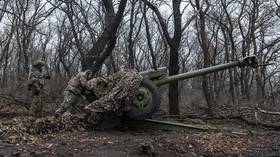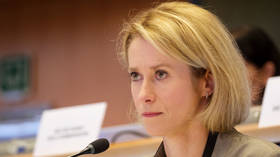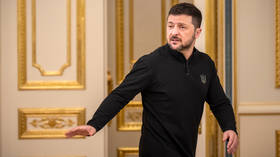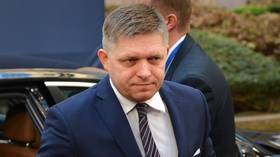Interview with Professor Sergey Arkhipov

Professor Sergey Arkhipov is one of Russia's leading traumatologists. He’s treated at least 30 Olympic champions in his time. Recently he had a visit from Aleksander Povetkin, the 2004 Athens super-heavyweight boxing gold medalist. RT spoke to the prof
RT: Could you please tell us about Povetkin’s injury? How did it happen and how is it being treated?
Doctor Sergey Arkhipov: Shall I speak about this particular injury or shall I first tell you about such injuries in general?
RT: First in general and then – about Povetkin’s in particular.
Doctor: This is an ankle-joint injury of soft tissue – not of the bone. When there are no fractures, say, of the ankle-bone, or talus. It’s only about the soft tissue that forms the ankle-joint, including the joint capsule which is fixed in certain places by ligaments within the capsule – the tendon group of filaments, among them a delta-shape ligament on the outside and two splint-bone ligaments inside. These three structures, which are rather important for the ankle-joint, get injured quite often – with the bone not fractured, the tissue may be injured.
Aleksandr Povetkin was injured exactly this way. As he was running a cross-country race, he stumbled across a knot and fell with all his weight, thus spraining his foot, which caused the injury of the ankle-joint. It was in the city of Kursk where he lives, or his family lives – he was doing training as part of the preparations for his fight with Klichko. Local doctors did what they could to help, by x-raying him etc, following correct procedures. They put a plaster on the foot, prescribed a certain treatment, after which he came to Moscow.
They called and asked me if I could help – I welcomed them. So, I examined him after the plaster was removed and saw that the ankle-joint was swollen – so was the foot. It’s a typical thing for haemorrhages – both from outside and inside – where the ligaments are injured. What are ligament injuries about? [Showing with his hands]. It’s when the filaments and the vessels get torn, which causes a blood spill from the minute vessels into the surrounding tissues, that we can see bruises, in this case from both sides. His joint is stable though, which is indeed important, as the two bones that form the ankle-joint – I will show you the pictures later – so, the two bones that form the joint – are there, uninjured. The intercrural ligaments are not affected, fortunately for him.
What is injured, though, is the delta-shaped ligament – as a sprain – not all but only some filaments are torn, which does not cause a full disruption of the anatomic structure. The same sprain is on the exterior of the joint – the splint-bone ligament, both the front and the back ones, also the joint capsule is injured – since it all is integral. The clinical symptoms were obvious, so I examined him, diagnosed and recommended not a surgery but a conservative therapy by securing the foot – not with plaster but with an up-to-date bone splint for about four weeks. It does not hinder much.
I also recommended rehabilitation, including physiotherapy, hot applications, medications, electrical treatment – to ensure the restoration of the ankle-bone functions. Unfortunately, we don’t have many rehabilitation centres of this kind, with some available only in Moscow, I think. There are two of them: one is the Pirogov Federal Centre with the Russian Health Care Ministry. There is a competent doctor working there. Another centre for sports medicine has a doctor called Vladimir Preobrazhenskiy, a man who has worked as a sports doctor all his life – very competent in the field of rehabilitation.
So, after a consultation with me, it was decided that the best place for the treatment would be there, where all the modern technical facilities are available to treat quickly and efficiently, to let Aleksandr Povetkin continue his sporting career, and, among other things, to be ready to fight Klichko. I can say for sure that in December he will not be ready, so the fight will have to be postponed, just because Povetkin will not be physically fit – he will not be eligible for full-on training – neither with the bag, punch mitts nor in sparring. It goes without saying that during these 45 days or so he will not be fighting fit; it will take time to regain that, in terms of physical fitness and this joints. I don’t see anything tragic in his injury and I don’t think it will affect his sporting life in any respect. It’s an ordinary injury, often with football or ice-hockey players, track-and-field athletes, depending on which limbs are involved. It’s a matter of time.
RT: Everybody’s system is unique. Could you say how long the treatment may last?
Doctor: I don’t see any need to speed up the treatment, because the biological processes are under way, with their predetermined schedules, whatever stimulation applied. This is how the human body and its tissues work. And I would hate to promise what he would not be able to fulfil; I mean, if I say the patient will recover in six weeks, while he’ll do this in eight weeks, would it mean the treatment will have been bad? And if I say he will recover in six weeks, but he will do it in four, would it – logically – mean the treatment was terrific? So, I think he will be fit within the typical timeframe I mentioned. He will have to be examined regularly – we have agreed about this – and we will co-ordinate what to treat and how. So, it’s a common case, not a fracture like Marc van Basten had, which disrupted his career in his time. So, Povetkin is due to return to boxing. Quite a number of Olympic and world champions have had such injuries before they won their top prizes. All is quite simple. At the same time, he needs attention and time. Evidently the fight has to be postponed. Other options do not seem possible since he can’t box physically.
RT: I have not yet had an opportunity to see Aleksandr after he was injured. I may see him only next Monday or Tuesday, along with Vladimir Khryunov… How does Aleksandr look now?
Doctor: He looks perfectly well, although he uses crutches – but only in addition to his fully being able to step with his foot, with a splint on it, because the foot physiologically needs its natural movements. He may as well be allowed a stationary foot load, but with restricted movements of his foot, and restricted pressure on the foot by the crutches. With the physiology of the movements preserved, the movements will be gradually expanded, as the healing progresses. It’s obvious that the muscles of the shank and the foot will become much weaker. Particular efforts will be required to restore all the subtle movements of the foot.
RT: So, when he came to see you, as he had been preparing himself for the fight…
Doctor: I did not see much frustration in his eyes. He is a strong guy and not only physically – his nervous system is very calm – it can be easily seen. He appears to be a very serious and strong sportsman, sure to go through this hardship. There is nothing terrible in it. I believe he will succeed to recover within the timeframe envisaged. Injuries are part of sport. We can get injured even in our ordinary every-day life, let alone cases when the body is on the verge of its capacity.












